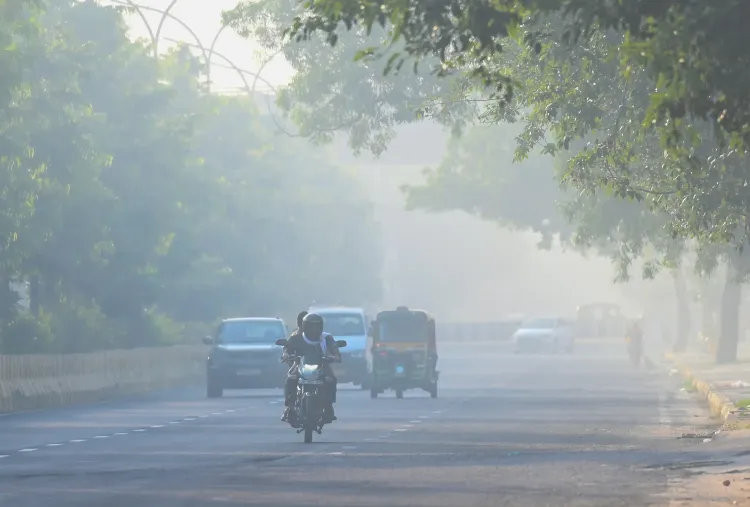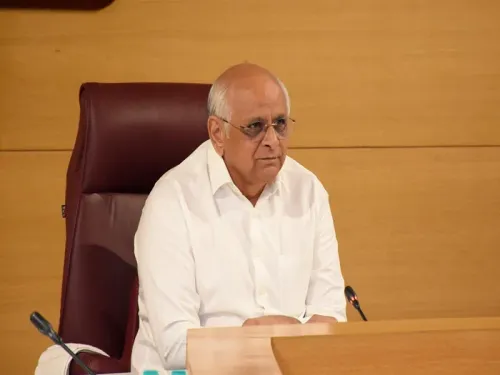Will Minimum Temperatures Drop in Delhi-NCR While Pollution Rises?

Synopsis
Key Takeaways
- Minimum temperatures in Delhi-NCR will fall starting November 1.
- Air quality is likely to deteriorate due to trapped pollutants.
- The next phase of GRAP may be implemented soon.
- Residents are advised to take precautions to protect their health.
- Cold weather is being felt across North India.
New Delhi, Oct 30 (NationPress) The arrival of November is anticipated to usher in colder and foggy mornings in Delhi and the National Capital Region (NCR), coinciding with a rise in pollution levels.
The India Meteorological Department (IMD) has indicated that minimum temperatures will start to dip from November 1, while the maximum temperatures are expected to remain around 30 to 31 degrees Celsius.
The weather bureau has dismissed the possibility of rainfall in the upcoming days. Between October 30 and November 4, the skies will be clear, though light fog and mist are likely during the early mornings and evenings, according to the IMD.
On Thursday, Delhi is predicted to record a maximum temperature of 30 degrees Celsius and a minimum of 18 degrees, which may further decrease to 17 degrees by November 1. Meteorologists anticipate that temperatures will gradually decline, marking the initial signs of winter. However, this temperature drop is likely to worsen air pollution levels in the area.
Weather specialists explain that cold and dry air can trap pollutants close to the ground, resulting in a sharp decline in air quality. Without rain to cleanse the air, the Air Quality Index (AQI) in Delhi-NCR is expected to remain in the 'poor' to 'very poor' range in the days ahead.
In light of deteriorating conditions, the Commission for Air Quality Management (CAQM) and other environmental organizations are likely to roll out the next phase of the Graded Response Action Plan (GRAP) soon. The heightened measures could involve a prohibition on construction and demolition activities, limitations on truck access, enhanced road cleaning, and frequent water sprinkling to mitigate dust.
Humidity levels are forecasted to vary between 60 and 85 percent, increasing the chances of fog and smog formation, particularly during morning and evening hours. Health professionals have advised residents to limit outdoor activities, especially for children and the elderly, and to wear masks when going outside.
If the dry conditions persist, air quality may deteriorate further in the first week of November, potentially leading to respiratory issues and eye irritation among residents.
The temperature drop is being felt beyond Delhi-NCR. From Uttar Pradesh to Bihar and Madhya Pradesh, people have turned off fans and air conditioners, with many now using light blankets at night.
Winter is gradually settling in across North India. While Delhi and Uttarakhand are experiencing a mild chill, parts of Uttar Pradesh are encountering colder weather due to rain and strong winds. Meteorologists forecast that temperatures across the region will continue to decrease in the first week of November, officially signaling the arrival of winter.









